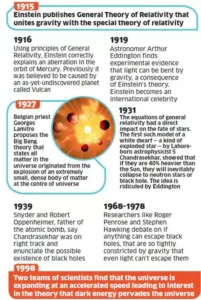Wigner Crystal
News: After 90 years, the mysterious Wigner Crystal has finally been captured by physicists.
Definition:
-
- A Wigner crystal is the solid (crystalline) phase of electrons first predicted by Eugene Wigner in 1934.
- Eugene Wigner, a professor of physics won the 1963 Nobel Prize for his work in quantum symmetry principles.
- Wigner crystal is essentially a solid formed entirely of electrons arranged in a crystal-like structure.
- A crystal refers to the way atoms can be arranged in solid matter. In typical crystalline materials, the atoms are bound to one another in a way that forms a repeating pattern in space.
Formation of Wigner crystal:
- At room temperature, electrons possess enough kinetic energy to overcome the repulsive force between particles with the same electric charge.
- This allows them to flow together, forming electric currents. However, when the temperature drops significantly, approaching absolute zero, the kinetic energy of the electrons diminishes greatly.
- Consequently, the repulsive electric forces between them become dominant.
- At these extremely low temperatures, the electrons are compelled to arrange themselves into a uniform grid or lattice-like structure.
- This ordered arrangement occurs because the repulsive forces between electrons outweigh their kinetic energy, leading to the formation of Wigner Crystal.
- The electrons settle into a stationary arrangement dictated by their mutual repulsion, akin to the way atoms arrange themselves in a crystal lattice.
Quantum Behavior of Electrons: A true Wigner crystal, instead of following the familiar laws of physics in the everyday world, would follow the laws of quantum physics, in which the electrons would act not like individual particles but more like a single wave.
Features:
-
- Wigner crystal is stable at extremely low densities. If the density increases, the kinetic energy becomes important, and eventually the crystal melts.
- Wigner crystal is very difficult to observe experimentally. The reason is that it is very fragile with respect to the environment.
Coordinated Lunar Time (LTC)
News: The US has formally instructed NASA to develop a time standard dedicated to the Moon. This initiative aims to provide a unified reference for international bodies and private enterprises conducting activities on the lunar surface, streamlining coordination and collaboration efforts.
How Does Earth’s Time Standard Work?
- Coordinated Universal Time (UTC) serves as the foundation for most world clocks and time zones.
- UTC is established by the International Bureau of Weights and Measures in Paris, France, and acts as the internationally agreed-upon standard for world time.
- Atomic clocks measure time using the resonant frequencies of atom.
-
-
- Resonant frequencies is the natural frequency of an object where it tends to vibrate at a higher amplitude of atoms such as cesium-133.
-
-
- In atomic time, a second is defined as the period in which a caesium atom vibrates 9,192,631,770 times.
- As the vibration rates at which atoms absorb energy are highly stable and ultra-accurate, atomic clocks make for an excellent device for gauging the passage of time.
- To obtain their local time, countries need to subtract or add number of hours from UTC depending on how many time zones they are away from 0 degree longitude meridian (Greenwich meridian).
- If a country lies on the west of the Greenwich meridian, it has to subtract from the UTC, and if a country is located on the east of the meridian, it has to add.
Why Do We Need A Time Standard For The Moon?
- UTC, however, cannot be used to determine time on the Moon. That is because time on the Moon flows differently than it does on the Earth.
- As there is less gravity on the Moon, time ticks slightly faster there relative to the time on the Earth. This is due to Einstein’s General Relativity.
- For instance, for someone on the Moon, an Earth-based clock will appear to lose on average 58.7 microseconds per Earth day with “additional periodic variations”.
- The discrepancy may create problems such as a spacecraft seeking to dock on the Moon, data transferring at a specific time, communication, and navigation.

- Einstein’s General Relativity:
- The theory of general relativity is a fundamental framework in modern physics that describes the gravitational force as a curvature of spacetime caused by the presence of mass and energy.
- According to this theory, massive objects like stars and planets warp the fabric of spacetime around them, creating a gravitational field that influences the motion of other objects.
- The gravitational field on the surface of the Moon is weaker than the gravitational field on the surface of the Earth.
- This is because the Moon has a smaller mass and consequently, a weaker gravitational pull. As a result, time ticks slightly faster on the Moon compared to Earth.
POEM-3 (PSLV Orbital Experimental Module-3)
News: ISRO’s POEM-3 mission has accomplished zero orbital debris mission.
-
- ISRO’s PSLV-C58/XPoSat mission successfully deployed the XPoSat satellite and converted the PSLV’s last stage into the POEM-3 module, leaving no debris in Earth’s orbit.
POEM-3:
- The PSLV Orbital Experimental Module is a dedicated platform designed to facilitate in-orbit experiments utilizing the final stage of the Polar Satellite Launch Vehicle (PSLV).
- It has been developed by the Vikram Sarabhai Space Centre (VSSC).
- PSLV Orbital Experimental Module was used for the first time in the PSLV-C53 mission which initially launched XPoSat in June 2022.
-
- ISRO made POEM orbit the earth as a stabilised platform to perform in-orbit scientific experiments with various payloads.
- The XPoSat mission aimed to leave no debris in space, demonstrating ISRO’s commitment to responsible space practices.
-
Features:
- POEM is powered by solar panels mounted on the fuel tank of the rocket’s fourth stage and a lithium-ion (Li-ion) battery.
- It has a dedicated navigation, guidance, and control (NGC) system to stabilise its altitude along with helium control thrusters.
- It communicates to ISRO’s NavIC satellite constellation for navigation and it also has a telecommand system to communicate with the ground station.
Baobab Tree
News: Baobab reforestation efforts show rapid impact in Madagascar.

Definition:
- Baobabs are long-lived deciduous, small to large trees from 20 to 100 ft tall with broad trunks and compact tops.
Lifespan: Baobab trees can live for more than a thousand years and are perhaps among the oldest living things on the planet.
Distribution:
-
-
- Baobab trees are native to mainland Africa and the island country of Madagascar.
- Mandu, in Dhar district of Madhya Pradesh, is perhaps the only place in India where baobab trees are found in abundance.
- Besides Mandu where it is most abundant, baobab trees have also been recorded in Prayagraj in Uttar Pradesh, Wai in Maharashtra and some other places.
-
Uses: The Baobabs have medicinal properties and provides some income for the Bhil community, which sells its fruits and seeds to local traders.
Significance: Baobabs are known as the ‘tree of life’ because it is able to store water from the rains in their vast trunk and produce a nutrient-dense fruit in the dry season when the land turns arid.
Chital (Spotted Deer)
News: Recent studies in certain regions of the Andaman and Nicobar Islands indicate that the invasive chital species is negatively impacting local flora and fauna, necessitating strategic management measures.
Chital (spotted deer):
-
- It is a deer species native to the Indian subcontinent.
- It is an herbivorous, Asiatic deer, belonging to the family Cervidae.
- It lives in grasslands & forests in India & Sri Lanka in herds.
- The male chital are larger & heavier than female chitals.
- The male chital alone carry three-tined antlers.
- It is the state animal of Telangana.
- IUCN Status : Least Concern
- CITES: Not Listed

What Are Invasive Alien Species?
- The Convention on Biological Diversity (CBD) defines invasive alien species (IAS) as “species whose introduction and/or spread outside their natural past or present distribution threatens biological diversity”.
- These include animals, plants, fungi, and even microorganisms, and can influence all kinds of ecosystems.
- Invasive Alien Species “arrives, survives and thrives”: means that these species need an introduction either through natural or human intervention, survive on native food resources, reproduce at a fast rate, and edge out native species in the competition over resources.
Problem in Andaman:
- Chital, native to mainland India, were introduced to Andaman and Nicobar Islands by the British in the early 20th century.
- The Chital multiplied in an unchecked environment & in the absence of large predators had now become a problem for authorities.
- Under the Wildlife Protection Act, 1972, an officer of the rank of Chief Wildlife Warden can permit translocation for the purpose of scientific management but suchtranslocation should cause minimum trauma to animals.
Convention on Biological Diversity (CBD):
Creation: The Convention on Biological Diversity (CBD) is an international legal instrument.
CBD was opened for signature at the Earth Summit in Rio de Janeiro on 5 June 1992 and entered into force on 29 December 1993.
Aim:
-
-
- Conservation of biological diversity
- The sustainable use of the components of biological diversity
- Equitable sharing of the benefits arising out of the utilization of genetic resources.
-

-
-
- Management: The CBD’s governing body is the Conference of the Parties (COP).
- Members: Ratified by 196 nations.
-
Andaman and Nicobar Islands :
- The Andaman and Nicobar Islands are strategically located in the Indian Ocean between the Indian mainland, Myanmar, and Indonesia, and are close to important maritime routes.
- The islands were first controlled by the Dutch, then by the British, and were taken over by the advancing Japanese military during World War II (1942-45).
- They were formally handed over to Subhas Chandra Bose’s Azad Hind government on December 29, 1943.
- During his visit to Port Blair, Subhas Chandra Bose hoisted the Indian Tricolour at the Gymkhana Ground (today’s Netaji Stadium) at Port Blair.
- Before his departure, he also renamed Andaman as Shaheed (“Martyrs”) Island, and Nicobar as Swaraj (“Freedom”) Island.”
- Ross Island, officially known as Netaji Subhash Chandra Bose Island, is an island of the Andaman Islands.

